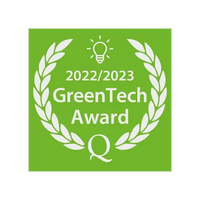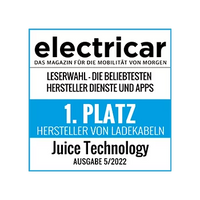There are already over 3.5 times more electric charging stations than petrol filling stations. In Germany alone, there are currently around 50,000 publicly accessible electric charging points available. The share of fast charging points was over 16 percent as of December 1, 2021.
Whether there are enough charging points in a particular region can easily be determined using the following formula.
By 2025: Number of electric cars * 3 to 5 percent = number of fast charging points required
From 2025: Number of electric cars * 2 to 3 percent = number of fast charging points required
Regardless of the type of charging station - whether AC or DC - the EU recommends at least one charging station per ten electric vehicles. However, the charging infrastructure should always be one step ahead of demand. Therefore, the number of charging points must increase faster than the number of electric cars on the road. And the vehicle population has been growing exponentially for years. More important than the absolute numbers, however, is the spatial distribution of the charging infrastructure. Fast charging stations are needed primarily on motorways and traffic junctions. Fast charging parks every 50 to 100 km along all major motorway routes make sense. For professional drivers and commuters who travel long distances, charging at rest areas or fast charging parks is sensible and also necessary.
In all other cases, AC charging stations are completely sufficient. In public spaces, they should be available for short interim charging in busy places such as supermarkets, shopping centers, restaurants, concert halls, sports stadiums, fitness centers and institutions. A fundamental rethinking is needed here and no attempt is made to transfer old habits to new possibilities and innovations. The mistake in thinking is that you have to drive to gas stations with electric cars to "fill up" the empty batteries.
Electricity is available everywhere, so it is possible to use the vehicle's idle times to charge it - this is usually at home or at work. In addition to setting up public charging infrastructure and fast-charging parks, the focus should therefore be on setting up domestic charging infrastructure.
And that is not a Herculean task. If you consider that in principle every power source, i.e. every household and industrial socket, could be used as an electric charging station, there would already be around 60 million charging points in Germany that would be accessible with the Juice Booster 2. That would be over 1,000 times more electric charging points than fuel pumps.
Sources:
silentMag 6/2021
https://www.bundesnetzagentur.de/DE/Sachräume/ElektrizitaetundGas/unternehmen_Institutionen/E-Mobilitaet/Ladesaeulenkarte/start.html
https://www.next-mobility.de/agora-verkehrswende-ford-bei-ladenetz-fuer-e-autos-auf-schnellladen-konzentrieren-a-1094803/?cmp=nl-393&uuid=06a5a06278c3382c53889e3b953b2b2d













